Related Research Articles

The imperial system of units, imperial system or imperial units is the system of units first defined in the British Weights and Measures Act 1824 and continued to be developed through a series of Weights and Measures Acts and amendments.

Metrication or metrification is the act or process of converting to the metric system of measurement. All over the world, countries have transitioned from local and traditional units of measurement to the metric system. This process began in France during the 1790s, and is still continuing more than 200 years later, with the modern International System of Units, as the metric system has not been fully adopted in all countries and areas.

Metrication is the process of introducing the International System of Units, also known as SI units or the metric system, to replace a jurisdiction's traditional measuring units. U.S. customary units have been defined in terms of metric units since the 19th century, and the SI has been the "preferred system of weights and measures for United States trade and commerce" since 1975 according to United States law. However, conversion was not mandatory and many industries chose not to convert, and U.S. customary units remain in common use in many industries as well as in governmental use. Unlike other countries, there is no governmental or major social desire to implement further metrication.
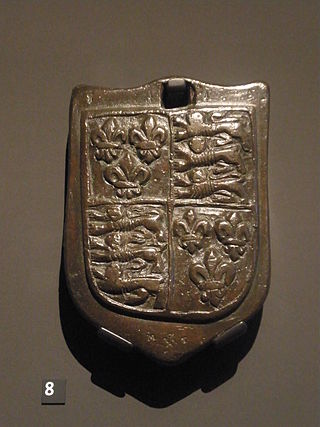
The stone or stone weight is an English and imperial unit of mass equal to 14 pounds (6.35 kg). The stone continues in customary use in the United Kingdom for body weight.
The Metric Martyrs was a British advocacy group who campaigned for the freedom to choose what units of measurement are used by traders. The group believed that vendors should have the freedom to mark their goods with imperial weights and measurements alone. This opposes the current legal position that imperial units may be used so long as metric units are also displayed.

Australian standard pallets are square softwood or hardwood pallets that are standard in Australia and non-standard anywhere else in the world.
The spread of metrication around the world in the last two centuries has been met with both support and opposition.

Metrication in Canada began in 1970 and ceased in 1985. Canada is now a functionally metric country in most areas of day to day life and in most sectors with some specific exceptions in particular industries and other holdovers of habit. These holdovers are mainly due to historical ties with the United Kingdom, the traditional use of the imperial system of measurement in Canada, proximity to the United States, and strong public opposition to metrication during the transition period.
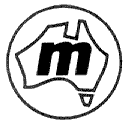
Metrication in Australia effectively began in 1966 with the conversion to decimal currency under the auspices of the Decimal Currency Board. The conversion of measurements—metrication—commenced subsequently in 1971, under the direction of the Metric Conversion Board and actively proceeded until the Board was disbanded in 1981.

Metrication, the process of introducing the metric system of measurement in place of imperial units, has made steady progress in the United Kingdom since the mid-20th century but today remains equivocal and varies by context. Most of government, industry and commerce use metric units, but imperial units are officially used to specify journey distances, vehicle speeds and the sizes of returnable milk containers, beer and cider glasses, and fresh milk is often still sold in multiples of pints, with the metric equivalent also marked. Imperial units are also often used to describe body measurements and vehicle fuel economy. In schools, metric units are taught and used as the norm. Imperial units that remain in common usage in the UK are also taught.
Metrication, or the conversion to a measurement system based on the International System of Units (SI), occurred in India in stages between 1955 and 1962. The metric system in weights and measures was adopted by the Indian Parliament in December 1956 with the Standards of Weights and Measures Act, which took effect beginning 1 October 1958. The Indian Coinage Act was passed in 1955 by the Government of India to introduce decimal coinage in the country. The new system of coins became legal tender in April 1957, where the rupee consists of 100 paise. For the next five years, both the old and new systems were legal. In April 1962, all other systems were banned. This process of metrication is called "big-bang" route, which is to simultaneously outlaw the use of pre-metric measurement, metricate, reissue all government publications and laws, and change the education systems to metric.
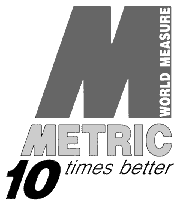
Jamaica started metrication in the 1970s. However, it was not completed until the 2000s.

New Zealand started metrication in 1969 with the establishment of the Metric Advisory Board (MAB) and completed metrication on 14 December 1976. Until the 1970s, New Zealand traditionally used the imperial system for measurement, which it had inherited from the United Kingdom.

The Metric Commission, formally the Preparatory Commission for the Conversion to the Metric System, was a Canadian government agency established by the federal government in 1971 to facilitate Canada's conversion to the metric system from the imperial system of weights and measures and to educate the public on the metric system.
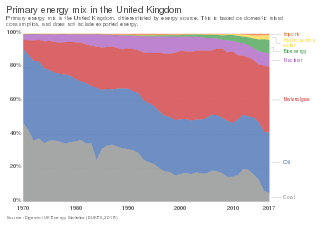
The energy policy of the United Kingdom refers to the United Kingdom's efforts towards reducing energy intensity, reducing energy poverty, and maintaining energy supply reliability. The United Kingdom has had success in this, though energy intensity remains high. There is an ambitious goal to reduce carbon dioxide emissions in future years, but it is unclear whether the programmes in place are sufficient to achieve this objective. Regarding energy self-sufficiency, UK policy does not address this issue, other than to concede historic energy security is currently ceasing to exist.

As of 2009, the European Union had issued two units of measurement directives. In 1971, it issued Directive 71/354/EEC, which required EU member states to standardise on the International System of Units (SI) rather than use a variety of CGS and MKS units then in use. The second, which replaced the first, was Directive 80/181/EEC, published in 1979 and later amended several times, which issued a number of derogations to the United Kingdom and Ireland based on the former directive.
The process of metrication in Barbados started in the early 1970s with an initiative by the government to push for industrialisation of the economy. The process has progressed slowly but the metric system has now replaced the previous imperial units.

The following outline is provided as an overview of and topical guide to the metric system – various loosely related systems of measurement that trace their origin to the decimal system of measurement introduced in France during the French Revolution.
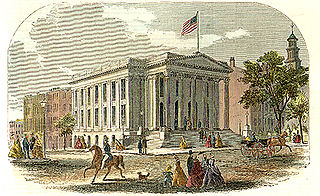
The imperial and US customary measurement systems are both derived from an earlier English system of measurement which in turn can be traced back to Ancient Roman units of measurement, and Carolingian and Saxon units of measure.
The European Rail Traffic Management System (ERTMS) is an initiative backed by the European Union to enhance cross-border interoperability and the procurement of signalling equipment by creating a single Europe-wide standard for train control and command systems.
References
- "White Paper on Metrication (1972) – Summary and Conclusions" (PDF). London: Department of Trade and Industry Consumer and Competition Policy Directorate. Archived from the original (PDF) on 21 October 2016. Retrieved 22 April 2012.
{{cite journal}}: Cite journal requires|journal=(help) - "Final Report of the Metrication Board (1980)" (PDF). London: Department of Trade and Industry Consumer and Competition Policy Directorate. Archived from the original (PDF) on 1 May 2013. Retrieved 15 March 2012.
{{cite journal}}: Cite journal requires|journal=(help)
- 1 2 "Historical Perspectives on Metrication by Jim Humble [Last Director of the UK Metrication Board]" . Retrieved 20 March 2012.
- 1 2 Chalupsky, Albert B; Crawford, Jack J; Carr, Edwin M (1974). Going Metric: An analysis of experiences in five nations and their implications for U.S. Educational Planning (PDF) (Report). U.S. Department of Health, Education & Welfare, Department of Health. p. 23. AIR-41800-2/74-FR. Retrieved 19 October 2011.
- ↑ Vlannes, PN (October 1976). "U.S. Metric Study Mission to the United Kingdom and the Federal Republic of Germany" (PDF). Washington DC: National Aeronautics and Space Administration (NASA). NASA-TM-X-74307.
- ↑ Metrication Board White Paper: para 45
- 1 2 3 "Metrication". Parliamentary Debates (Hansard) . United Kingdom: House of Lords. 30 November 1970. col. 326–347.
- 1 2 Metrication Board Final Report: para 1.6
- ↑ Hemenway, David (April 1979). "Standards systems in Canada, the U.K., West Germany and Denmark: An overview" (PDF). Washington DC: [United States] National Bureau of Standards.[ permanent dead link ]
- ↑ Metrication Board White Paper: para 47
- ↑ Metrication Board White Paper; para 12, 60
- ↑ Metrication Board White Paper; para 57
- ↑ Final Report of the Metrication Board, Appendix A
- ↑ Holland, Peter (1981). "The Quango in Britain" (PDF). The Trent Law Journal. 5: 1–9. Retrieved 13 March 2012.
- ↑ Metrication Board Final Report para 1.10
- 1 2 3 Official Year Book of the Commonwealth of Australia. Metric Conversion Board. 1972. p. 1025.
- ↑ Ganapathy, N (2012). "Metric Conversion". The Canadian Encyclopedia. Archived from the original on 20 September 2012. Retrieved 23 April 2012.
- ↑ "The United States and the Metric System" (PDF). Gaithersburg, Maryland: National Institute of Standards and Technology (NIST). October 1997. NIST LC1136. Retrieved 23 April 2012.